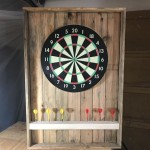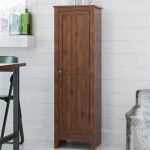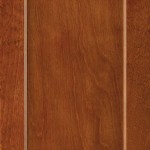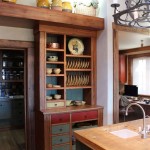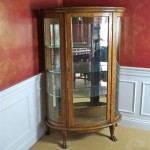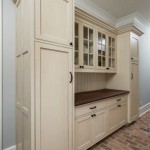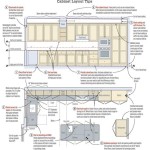How to Replace Cabinet Drawer Slides
Cabinet drawer slides, though often overlooked, are crucial components that dictate the functionality and ease of use of kitchen, bathroom, and other cabinetry. Over time, these slides can wear out, become damaged, or simply fail, leading to sticking drawers, difficulty opening and closing, and general frustration. Replacing drawer slides is a relatively straightforward DIY project that can significantly improve the usability of your cabinets without requiring professional assistance.
This article provides a comprehensive guide on how to replace cabinet drawer slides. It covers identifying the type of slides, measuring for replacements, removing the old slides, installing the new slides, and troubleshooting common issues. By following these steps carefully, anyone with basic tools and a moderate level of DIY skill can successfully revitalize their cabinet drawers.
Key Point 1: Identifying Your Existing Drawer Slides
The first step in replacing drawer slides is identifying the type of slides currently installed in your cabinets. There are several common types, each with its own mounting style and load capacity. Correct identification is essential for selecting compatible replacements.
Side-Mount Slides: These slides are the most common type and are mounted on the sides of the drawer box and the inside of the cabinet frame. They typically consist of two metal runners, one attached to the drawer and one attached to the cabinet. Side-mount slides can be full extension (allowing the drawer to open completely) or three-quarter extension (allowing the drawer to open partially). They are generally rated for lighter to medium loads.
Center-Mount Slides: Center-mount slides are mounted underneath the center of the drawer box. They provide a cleaner look, as the slides are not visible from the sides. They are usually simpler in design and often used in smaller drawers or drawers with lighter loads. Center-mount slides typically offer three-quarter extension.
Under-Mount Slides: Under-mount slides are attached to the underside of the drawer box. These slides offer a concealed appearance and often incorporate features such as soft-close mechanisms. They are typically used in higher-end cabinetry and can handle medium to heavy loads. Under-mount slides often require specific drawer box construction for proper installation.
Euro Slides (Epoxy Slides): Euro slides, also known as epoxy slides, are typically made of plastic or a combination of plastic and metal. They are attached to the sides of the drawer and the cabinet with pegs or screws. Euro slides are a more economical option and are typically used for lightweight drawers. They are identifiable by their plastic construction, often white or almond in color.
Once you have identified the type of slides you have, note the length of the slide. The length determines how far the drawer will extend. Measure the length of the slide when the drawer is closed, from the back of the cabinet to the front of the drawer face. Common lengths range from 12 inches to 28 inches, in increments of 2 inches.
Also, observe any features such as soft-close, self-close, or detents (which hold the drawer either open or closed). These features may influence your replacement choices.
Key Point 2: Measuring for Replacement Drawer Slides
Accurate measurements are crucial for ensuring that the replacement drawer slides fit properly and function correctly. While you can often replace slides with the exact same type and dimensions, there may be situations where slight adjustments are necessary.
Length: As mentioned earlier, the length of the slide is a critical measurement. Measure the existing slides from the back of the cabinet to the front edge of the drawer face when the drawer is closed. Purchase replacement slides that match this length. It is generally recommended to choose the closest available size if the exact length is not available, erring on the shorter side rather than the longer side.
Height and Width: For side-mount slides, the height and width of the drawer opening and the drawer box are important considerations. Measure the height of the opening inside the cabinet and the width of the drawer box. Ensure that the replacement slides will fit within these dimensions. Some slides may require a specific clearance between the drawer box and the cabinet frame. Consult the manufacturer's specifications for the replacement slides to determine the required clearances.
Mounting Hole Patterns: Note the location of the mounting holes on the existing slides. While it's not always possible to find replacements with identical hole patterns, matching the hole patterns as closely as possible will simplify the installation process. If necessary, you can drill new pilot holes for the screws (described later).
Load Capacity: Consider the weight that the drawer will be supporting. Replacement slides are typically rated for a specific load capacity. Select slides that can handle the expected weight of the items that will be stored in the drawer. Overloading the slides can lead to premature failure and difficulty opening and closing the drawer.
When purchasing replacement slides, bring the measurements and information gathered about your existing slides to the hardware store or online retailer. This will help the staff assist you in selecting the correct replacements. Consider purchasing a sample slide to test the fit and functionality before committing to replacing all the slides in your cabinets.
Key Point 3: Removing the Old Drawer Slides and Installing the New Ones
With the replacement drawer slides in hand, the next step is to remove the old slides and install the new ones. This process requires a few basic tools and a methodical approach.
Tools Required:
- Screwdriver (Phillips head or flat head, depending on the screws used)
- Drill with drill bits (for drilling pilot holes if necessary)
- Pencil
- Tape measure
- Level
- Safety glasses
- Work gloves
Removing the Old Slides:
1. Empty the Drawer: Remove all items from the drawer. This will make the drawer lighter and easier to handle.
2. Extend the Drawer: Extend the drawer as far as it will go. This will expose the screws that attach the slides to the drawer box and the cabinet frame.
3. Remove the Screws: Using the appropriate screwdriver, remove all the screws that secure the slides to the drawer box and the cabinet frame. Be careful not to strip the screw heads. If a screw is stripped, use a screw extractor or carefully drill it out.
4. Detach the Slides: Once all the screws are removed, carefully detach the slides from the drawer box and the cabinet frame. If the slides are stuck, gently pry them loose with a flathead screwdriver.
5. Clean the Surfaces: After removing the old slides, clean the surfaces of the drawer box and the cabinet frame where the new slides will be installed. Remove any debris, old adhesive, or remnants of the old slides.
Installing the New Slides:
1. Separate the Slides: Most drawer slides consist of two parts: one that attaches to the drawer box and one that attaches to the cabinet frame. Separate these two parts.
2. Attach the Drawer Slides: Attach the drawer slides to the drawer box. Align the slides with the pre-existing mounting holes, if available. If the mounting holes do not align, use a pencil to mark the location of the new mounting holes. Use a drill with a drill bit slightly smaller than the diameter of the screws to drill pilot holes. This will prevent the wood from splitting and make it easier to drive the screws.
3. Secure the Drawer Slides: Secure the drawer slides to the drawer box using the screws provided with the replacement slides. Make sure the slides are properly aligned and securely attached.
4. Attach the Cabinet Slides: Attach the cabinet slides to the cabinet frame. Use a level to ensure that the slides are installed horizontally. This is crucial for proper drawer function. Align the slides with the pre-existing mounting holes, if available. If the mounting holes do not align, use a pencil to mark the location of the new mounting holes and drill pilot holes.
5. Secure the Cabinet Slides: Secure the cabinet slides to the cabinet frame using the screws provided with the replacement slides. Make sure the slides are properly aligned and securely attached.
6. Test the Drawer: Carefully slide the drawer into the cabinet. The drawer should slide smoothly and easily. If the drawer sticks or binds, check the alignment of the slides and make any necessary adjustments.
7. Adjust as Needed: If the drawer does not align properly with the cabinet face, you may need to adjust the position of the slides slightly. Loosen the screws and reposition the slides until the drawer aligns correctly. Tighten the screws once the alignment is satisfactory.
8. Repeat for Other Drawers: Repeat the process for any other drawers that need to have their slides replaced.
Following these steps should result in a successful drawer slide replacement. However, some issues may arise during the process.
Key Point 4: Troubleshooting Common Issues
Even with careful planning and execution, some issues may arise during the drawer slide replacement process. Being prepared to troubleshoot these issues can save time and frustration.
Drawer Sticks or Binds: If the drawer sticks or binds when opening or closing, the slides may not be properly aligned. Check the alignment of the slides and make sure they are parallel to each other. Also, ensure that the drawer box is square and that there are no obstructions preventing the drawer from sliding smoothly.
Drawer Does Not Close Completely: If the drawer does not close completely, the slides may be installed too far back in the cabinet. Loosen the screws and move the slides forward slightly. Also, check for any obstructions in the back of the cabinet that may be preventing the drawer from closing fully.
Drawer Sags or Tilts: If the drawer sags or tilts, the slides may not be able to support the weight of the drawer. Ensure that the replacement slides have a sufficient load capacity. Also, check that the slides are securely attached to the drawer box and the cabinet frame.
Screws Strip Easily: If the screws strip easily when installing the slides, use a drill with a drill bit to drill pilot holes before driving the screws. Also, use high-quality screws that are the correct size for the mounting holes.
Existing Mounting Holes are Damaged: If the existing mounting holes are damaged, use wood filler to repair the holes before installing the new slides. Allow the wood filler to dry completely before drilling new pilot holes and installing the screws.
Soft-Close Mechanism Not Working: If the replacement slides have a soft-close mechanism that is not working properly, check the manufacturer's instructions for troubleshooting tips. The soft-close mechanism may need to be adjusted or lubricated.
By addressing these common issues, you can ensure that your replacement drawer slides function properly and provide years of smooth and reliable service. Taking your time, paying attention to detail, and double-checking your work at each step will contribute to a successful outcome.

How To Replace Old Drawer Slides Only 5 Easy Steps Vadania Home Upgrader

How To Install Drawer Slides Build Basic

How To Install Drawer Slides On A Vintage Dresser Shades Of Blue Interiors

How To Replace Drawer Slides The Vixen S Den

How To Replace Old Drawer Slides Only 5 Easy Steps Vadania Home Upgrader

How To Install Drawer Slides The Easy Way

How To Install Drawer Slides On A Vintage Dresser Shades Of Blue Interiors
How To Install A 3832 Drawer Slide On Frameless Cabinet In Few Steps

Fixing Drawers How To Make Creaky Glide Diy

How To Replace Old Drawer Slides Only 5 Easy Steps Vadania Home Upgrader
Related Posts

